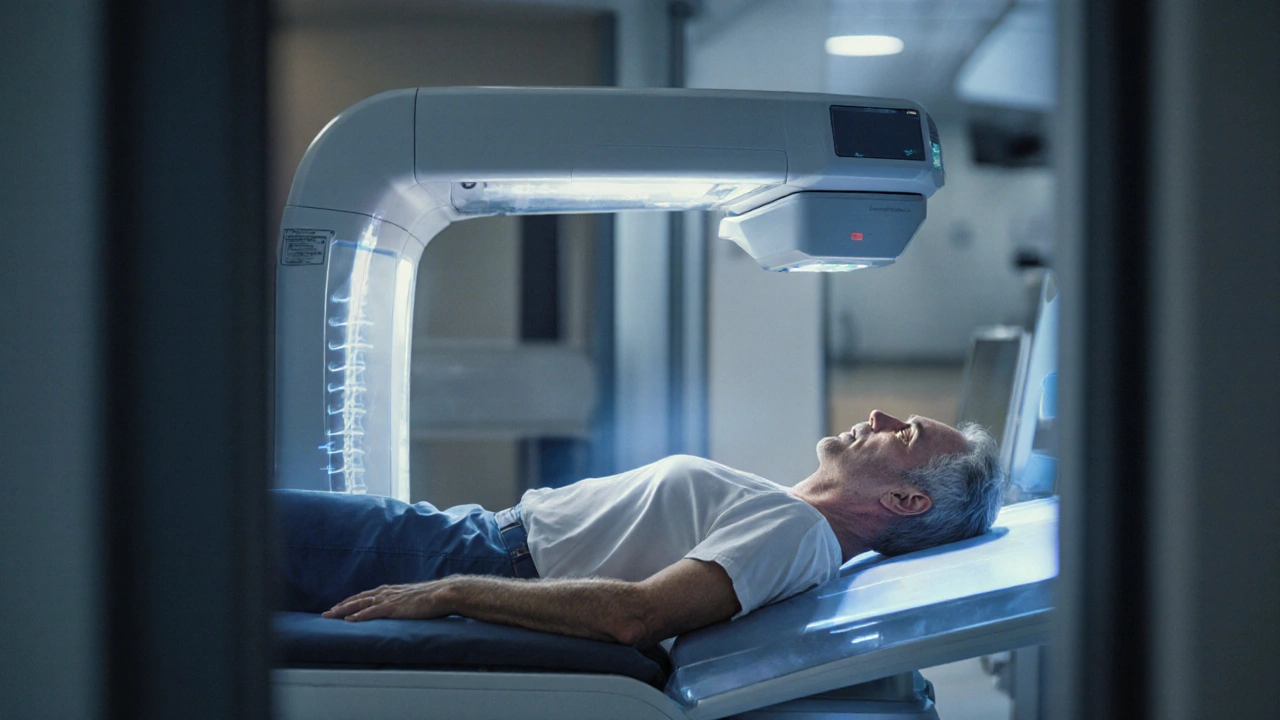DXA Scan: What It Is and Why It Matters
When working with DXA scan, a dual‑energy X‑ray absorptiometry test that measures bone mineral density (BMD) using two X‑ray beams. Also known as dual‑energy X‑ray absorptiometry, it provides a quick, non‑invasive snapshot of skeletal health and helps clinicians decide if you’re at risk for osteoporosis. The test reports results as T‑scores and Z‑scores, which compare your density to healthy young adults and age‑matched peers respectively.
Because bone mineral density, the amount of mineral matter per square centimeter of bone is the primary indicator of fracture risk, a DXA scan is the gold standard for diagnosing osteoporosis, a condition where bones become porous and fragile. Doctors often combine the BMD numbers with the FRAX assessment, a tool that estimates 10‑year fracture probability based on clinical factors to create a personalized treatment plan. This duo—DXA‑derived BMD and FRAX risk score—covers both the structural and probabilistic sides of bone health, making it easier to choose medications, lifestyle changes, or further monitoring.
Practical Insights and What to Expect
Most patients are surprised to learn that a DXA scan uses low radiation dose, roughly equivalent to a day’s natural background exposure, so safety isn’t a concern. The procedure takes about 10‑15 minutes: you’ll lie on a padded table while the scanner glides over your hip and spine, capturing images without any injection or contrast. Results are usually ready within a week, and your doctor will explain the numbers, how they relate to WHO diagnostic thresholds, and whether you need medication, vitamin D, or just a tweak in your exercise routine. Understanding these steps ahead of time can reduce anxiety and help you ask the right questions during your visit.
Below you’ll find articles that dive deeper into each aspect of the DXA experience—from preparing for the scan, interpreting T‑scores, comparing it with other bone health tests, to navigating insurance coverage. Whether you’re a first‑timer or a seasoned patient monitoring chronic bone loss, the collection offers clear, actionable guidance to make the most of your DXA results.
Why Bone Density Testing Is Crucial for Managing Paget’s Disease
Learn why bone density testing is essential for Paget's disease, how DXA scans guide treatment, and practical steps to reduce fracture risk.

